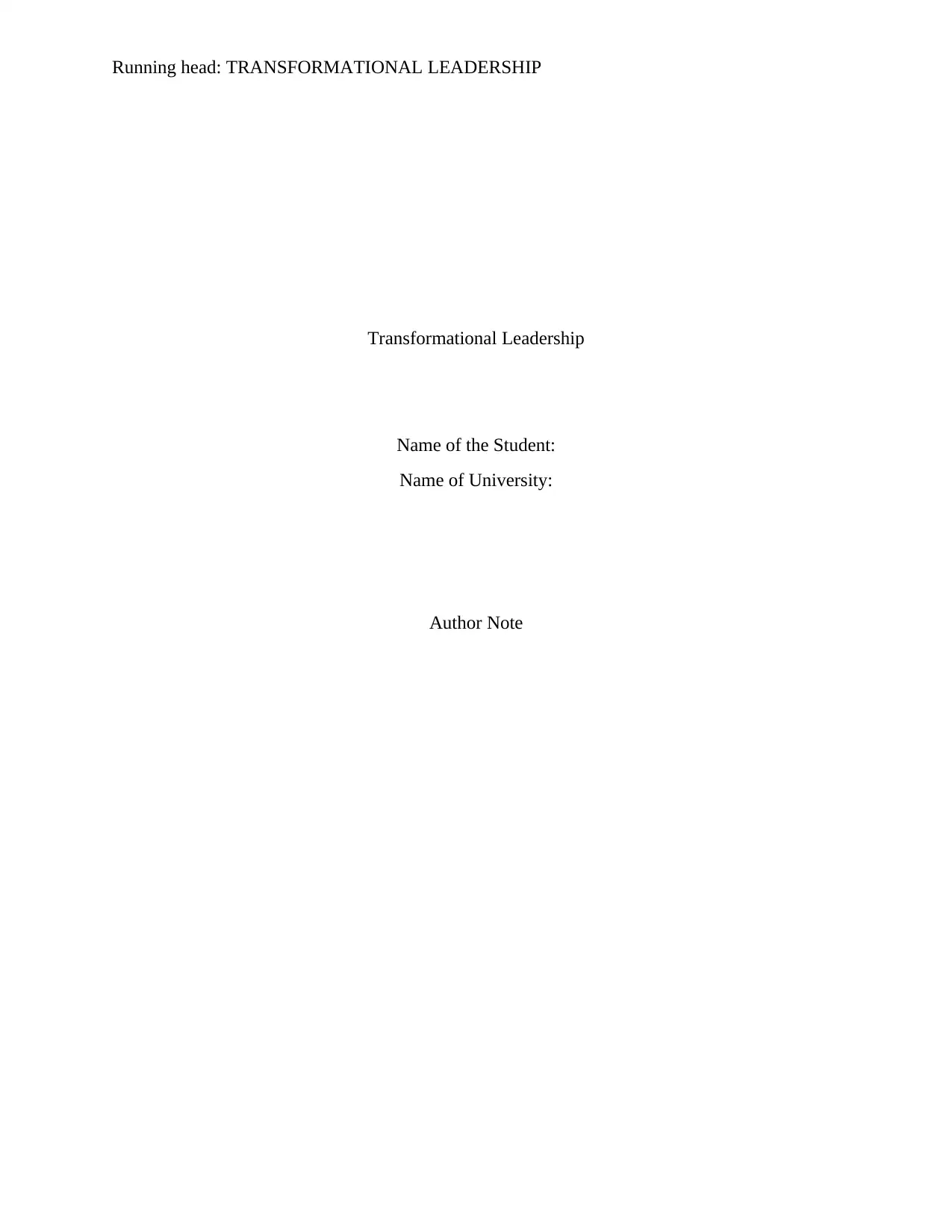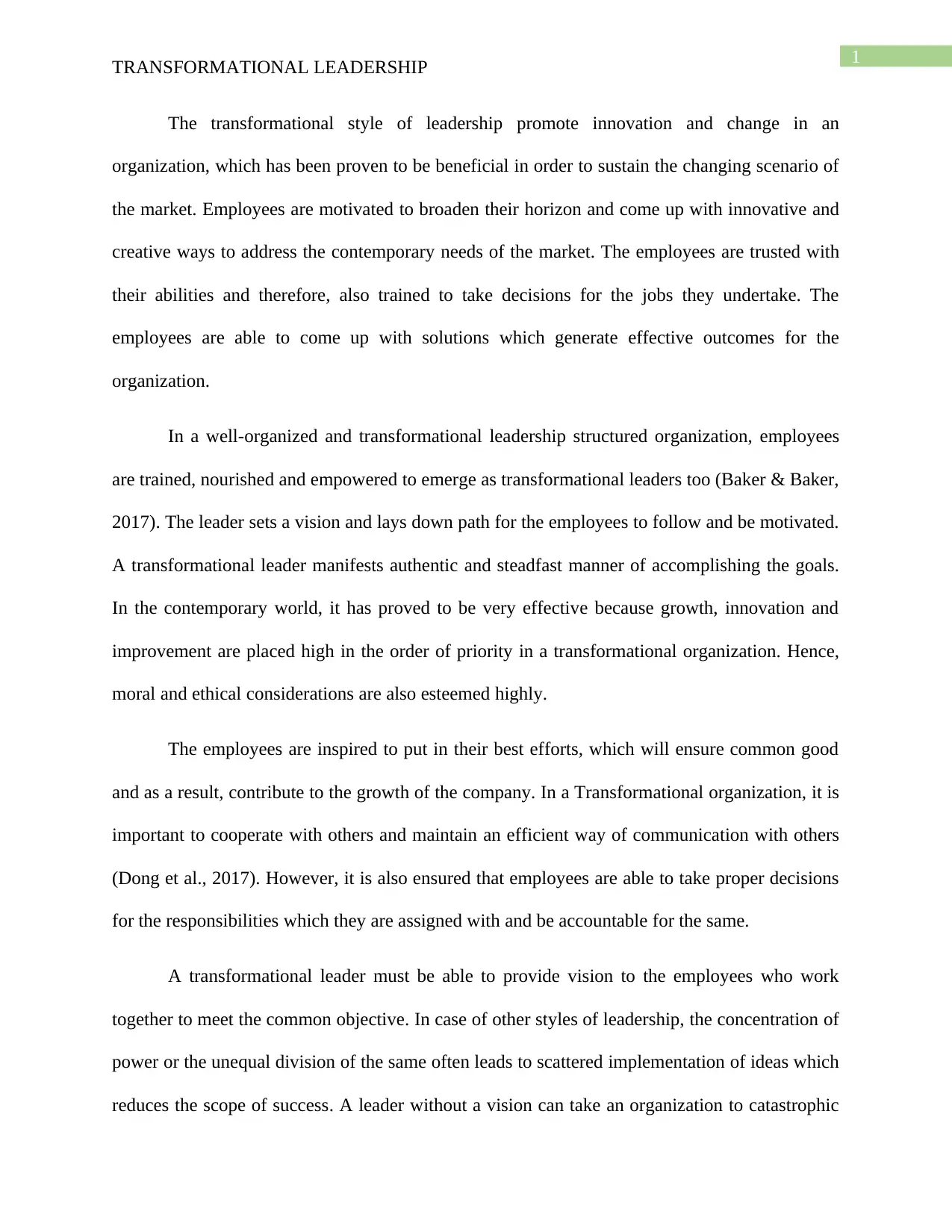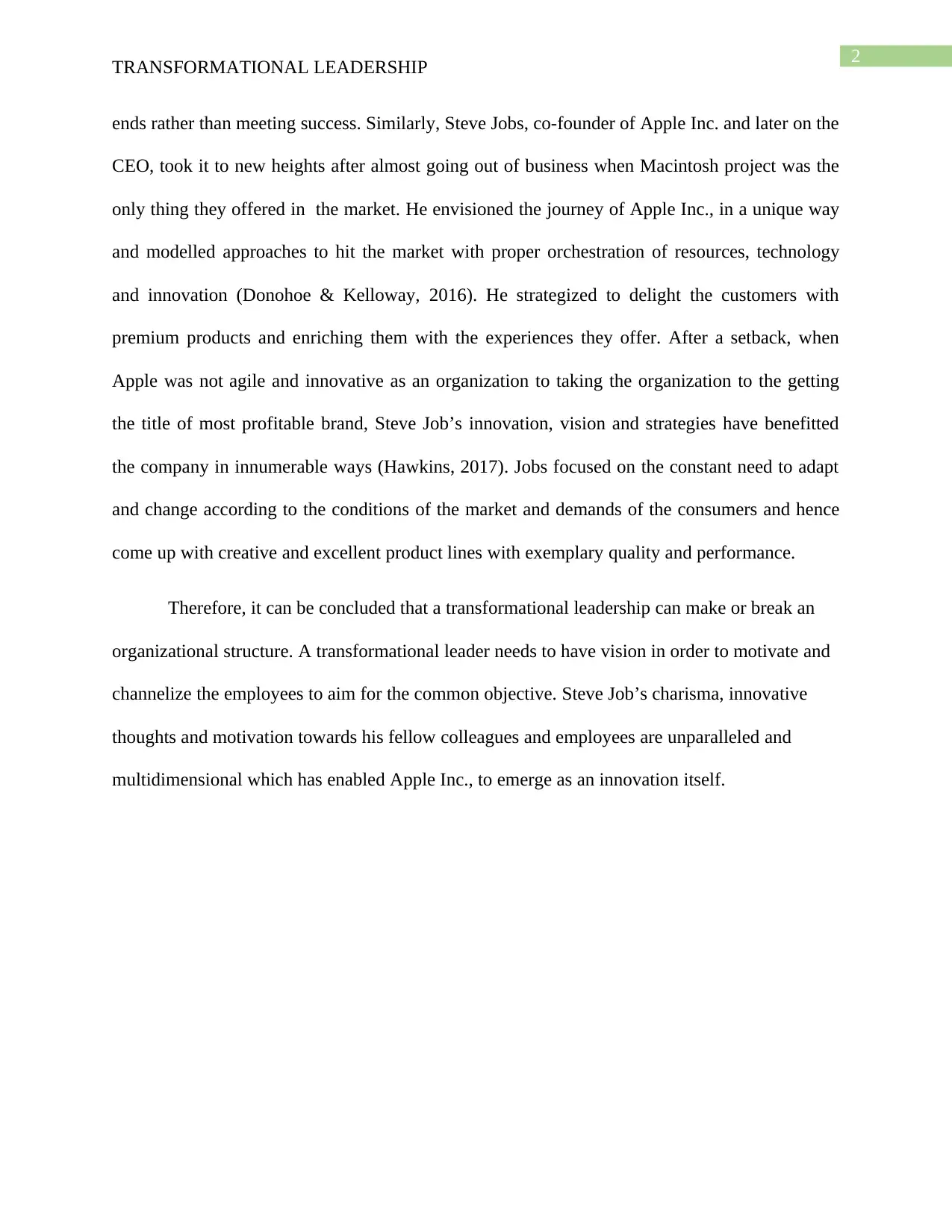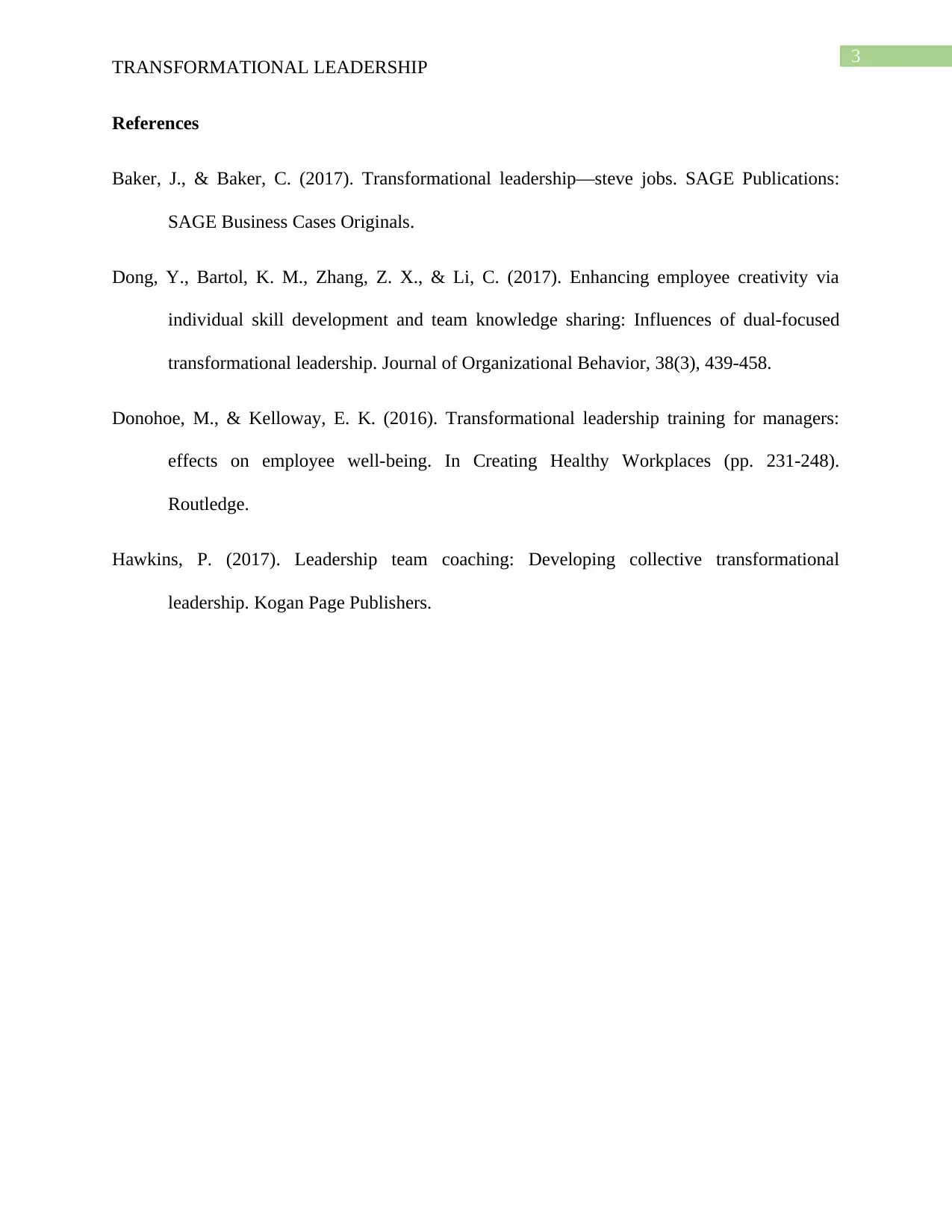MBA 550: Transformational Leadership Analysis and Discussion
VerifiedAdded on 2022/09/14
|4
|763
|19
Discussion Board Post
AI Summary
This discussion post examines transformational leadership, focusing on its impact on organizational innovation and employee motivation. The paper highlights the benefits of this leadership style, emphasizing the importance of vision, employee empowerment, and ethical considerations. It analyzes how transformational leaders like Steve Jobs drive change and foster creativity. The assignment requires an initial post and two response posts, connecting course content to broader leadership concepts. The paper also explores the significance of communication, decision-making, and accountability within a transformational organizational structure, concluding that transformational leadership is crucial for organizational success. The references provided support the arguments made throughout the discussion.
1 out of 4











![[object Object]](/_next/static/media/star-bottom.7253800d.svg)